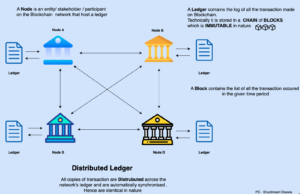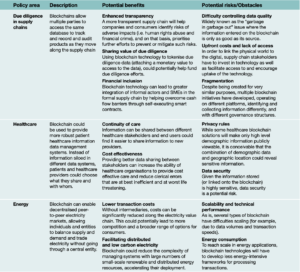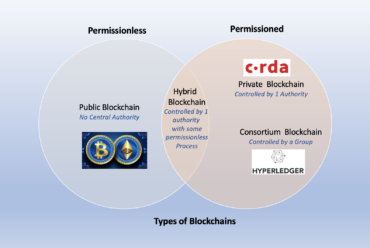Blockchain Unlocked: How This Revolutionary Technology is Changing the World as We Know It
With the advent of digitalization, the need for secure and transparent information exchange increasingly becoming important. Blockchain – A revolutionary technology has the potential to transform the way we store, share, verify data in a secure and transparent manner.

As per the Gartner Report for 2023 Emerging Technologies and Trends Impact Radar Blockchain will have a very high Mass in 1 to 3 Years
Initially developed as the underlying technology behind cryptocurrencies, blockchain has since expanded to various industries, offering a secure and decentralized way of exchanging information without the need for intermediaries.
Its potential applications are vast, ranging from financial services and supply chain management to healthcare and voting systems etc.
But what is blockchain exactly, and how does it work?
Fundamentally, blockchain is a combination of already existing technologies that together can create networks that secure trust between people or parties who otherwise have no reason to trust one another.
Specifically, it utilizes distributed ledger technology (DLT) to store information verified by cryptography among a group of users, which is agreed through a pre-defined network protocol, often without the control of a central authority.
The marriage of these technologies gives blockchain networks key characteristics that can remove the need for trust, and therefore enable a secure transfer of value and data directly between parties.
What is Blockchain ?
A blockchain is a distributed ledger of transactions between parties in a network, not controlled by a single central authority.

Ledger

You can think of a ledger like a record book: it records and stores all transactions between users in chronological order. Instead of one authority controlling this ledger (like a bank), an identical copy of the ledger is held by all users on the network, called nodes.
Blockchain’s key characteristics
Distributed:
- One of the core aspects of a blockchain is that it is a distributed ledger, meaning that the database is maintained and held by all nodes in the network.
- No central authority holds or updates the ledger, rather each node independently constructs its own record by processing every block (group of transactions), deciding if it is valid, then voting via the consensus mechanism on their conclusions.
- Once a change in the record is agreed, each node updates its own ledger.
Traditional databases are stored and maintained centrally, which can make them high-value targets for hackers and criminals.
Immutable:
- Once a transaction is added to a blockchain ledger, it cannot be undone.
- Immutability is one of the principal aspects that contribute to the trustworthiness of blockchain transactions.
- A blockchain’s immutability is secured through its use of cryptography.
In Traditional, centralised database,
An authorised user can connect to the server to add or modify the data without the approval or detection of other users. Because all the data is held in one place, if the security of the server or the authority that runs the server is compromised, data can be modified or permanently deleted. This may sometimes be irreversible and occur without anyone else realising it.
Agreed by consensus:
- No block can be added to the ledger without approval from specified nodes in the network.
- Rules regarding how this consent is collected are called consensus mechanisms.
- Consensus protocols are crucial in ensuring that every block is valid and that all participants agree and maintain the same version of the ledger.
- They heavily affect the incentives for nodes to act honestly and are therefore the most important variables when designing a blockchain.
Benefits of blockchain technology :
Transparency:
Blockchain is a decentralised ledger, anyone can view the transactions on the blockchain. This creates a high level of transparency and trust in the system.
Security:
Blockchain technology is highly secure and resistant to hacking or other malicious activity. This is because there is no central point of failure that can be targeted by attackers.
Efficiency:
Transactions are processed automatically by the network of computers, they can be completed much more quickly and efficiently than traditional transactions.
Trust:
Technology creates a high level of trust in the system because it’s virtually impossible to alter the data in the blockchain without being detected.
Overall, blockchain technology has the potential to revolutionize many industries and provide a new level of transparency, security, and efficiency in digital transactions.
Blockchain technology goes far beyond cryptocurrencies and tokens, and its usefulness as a wider economic and administrative tool is well worth exploring.
The table below describes just a small sample of blockchain’s potential to transform supply chains, healthcare and the energy sector.

Why should you care ?
Blockchain as a technology seems too valuable to be ignored. While process efficiencies and better security are key benefits that are being targeted, perhaps the real value proposition and potential lies in the new revenue and solutions that could be enabled by the technology.
Final Thoughts
Blockchain technology is a game-changer for industries that rely on secure and transparent transactions. Its benefits over traditional systems, including decentralisation, transparency, immutability, and security, make it an attractive alternative to traditional systems. As the technology continues to evolve, we can expect to see more applications of blockchain in the future.
Till then stay tuned and stay connected !!



